Looking back to a fortnight ago it seems silly to admit I have been living in fear of a bean for many years.
The bean in question in Canavalia, including swordbean (Canavalia gladiata) and jackbean (Canavalia ensiformis). These originate in lowland Brazil, where they outperform more familiar staple legumes in the humid conditions. They also are the leading candidate species for my own garden, and I have produced some impressive crops over the years without much effort.
The fear came from their considerable array of chemical defences inside the mature seeds, but to be fair most legumes are worthy of respect on this front. Kidney beans can be fatal if consumed raw. There are a few medical reports of people who ground up dry beans to eat who ended up in hospital due to the lectins, proteins which stick to complex sugars in vital parts of the cellular machinery. Deadly ricin from castor beans is a famous example. Common beans contain a lectin called phytohaemagglutin, which causes blood cells to clump together in high doses but usually just causes gastric distress after consumption of undercooked beans. Soybeans are also famous for their ability to mess up your thyroid and hormone systems. Legumes go out of their way to protect their babies.
Canavalia is packed with a few defence proteins called canavalin, concanavalins A and B, canatoxin and an enzyme called urease, and a non-protein amino acid called canavanine. Canavalin is structurally similar to the kidney bean defence protein, and sticks to the sugars on cells triggering a variety of responses include immune cell activation. Urease and canatoxin turn harmless urea into toxic ammonia, but don’t seem to escape the gut and are probably only relevant for seed eating insects. The canavanine imitates the natural amino acid arginine, and gets incorporated into many different proteins where it disrupts their structure and function. The same toxin is present in alfalfa sprouts and sometimes causes a lupus like syndrome in sensitive individuals.
Of these toxins, all but the canavanine is deactivated by prolonged wet cooking, and the canavanine itself can be leached into the water during boiling. The sprouting seed also seems to begin breaking down this toxin since it functions as a nitrogen store which the young plant repurposes for rapid growth. Studying the literature I found a paper which found kibbling the dry seeds sped up the detoxification process compared to whole seeds (Crack and cook: A simple and quick process for elimination of concanavalin A (Con A) from Canavalia seeds, A.B.I. Udedibie 1998). This seems to be driven by the lower surface area and thick skin of whole seeds, which slows the leeching of soluble toxins.
I decided it was time to be brave and try cooking my own batch of sword beans. I put two cups of dry seeds into a bowl to soak and changed the water 3-4 times each day for three days. The seeds swelled up to a brown colour, though about half the seeds remained pink and hard. I have discovered alternating soaking in water with sitting drained but damp works better for long soaking sessions to avoid the accumulation of smelly microbes- germinating beans absorb a lot of oxygen, and unwanted microbes thrive in low oxygen soaking water. Once the first few seeds began cracking their seed coats I picked out the hard seeds and put the swollen ones in a large pot of water for their first boil.
After about half an hour I drained the material and let it cool until I could peel the outer coats off the seeds. This was a pleasant and quick process since the seeds are so big. To imitate the kibbling process I then cut the seeds lengthwise, at right angles to the natural split between the cotyledons so the membranes around those tissues were cut open. The aim was to increase the surface area and rate at which toxins could leech out. At this stage I sampled the tip of a bean, around the size of a lentil, to get a sense of the taste of the residual toxins. The taste was tolerably acrid at this dose, a little like distilled celery essence. The sensation lingered for some time.
The sample went through three more changes of fresh boiling water, with about ten times the volume of water to beans. A few times the typical frothy layer appeared and was skimmed. Each time I sampled a slightly larger portion of a seed, noting the gradual fading of the original bad taste. After the fourth round I couldn’t detect any toxic residue, but taste buds are not always reliable and mine were untrained on this crop. I ate a whole bean, then waited an hour to see if any effects appeared before eating a few more. The next day I added a small portion to my lunch of endive and shallots from the garden with rice and cheese and noted no negative effects. In the week since I have added a solid portion to each lunch and have come to enjoy the ingredient.
The taste is quite different to common kidney beans. For one thing the seeds are not prone to turning to mush after cooking. This might reflect the very high protein content (around 30% by weight of dry seeds). The flavour is a bit nutty, slighty reminiscent of mung bean shoots, but mostly fairly neutral.
I still have more work to do with this promising species. For one thing, there is an entirely separate species in the form of the white jack bean to put through the same basic cooking process. Then I have the fun of experimenting with fermentation. Jack beans are commonly turned into tempeh in Indonesia, a technique I have no experience with but am keen to try. This has been studied and significantly reduces residual toxin levels. Food which requires this much cooking has a potential disadvantage in requiring larger amounts of firewood, but in climates where Canavalia perform the best there is usually an abundance of woody growth for this purpose. The high toxin levels in the seeds make them very easy to store in climates where storage pests are often a major problem for more familiar legumes.
The next big task is mastering trialling, breeding and cultivating the crop reliably at scale. I have hand crossed my original single strain of sword and jack beans, but the grow out last season failed due to seedlings being browsed. The larger set of seventeen strains from the Australian Grain Genebank mostly grew well and are currently producing pods. Their trellises were planted too close together to keep the forms separate, so I will need to repeat the process spread a more widely. This collection is mostly jack bean types, so I have a growing pile of mixed seed which I will use to produce a bigger crop for cooking and fermentation experiments. The best performing varieties will probably be hand crossed with sword bean again to form the foundation for a final selection program to develop a productive and reliable local form. I also noticed the crop quite likes climbing sugarcane stems with a little assistance, so I will consider selecting for this trait to reduce the energy building trellises.
Looking back I am glad I took my time building up to cooking this crop. Learning to handle a new species in the kitchen, especially one which can make you sick if you mess it up, requires the right headspace and attention to do the crop justice and avoid putting yourself off eating it ever again. I will keep growing lima beans on the side, but I am pretty confident Canavalia has taken the leading position as the future staple legume crop for my bioregion.

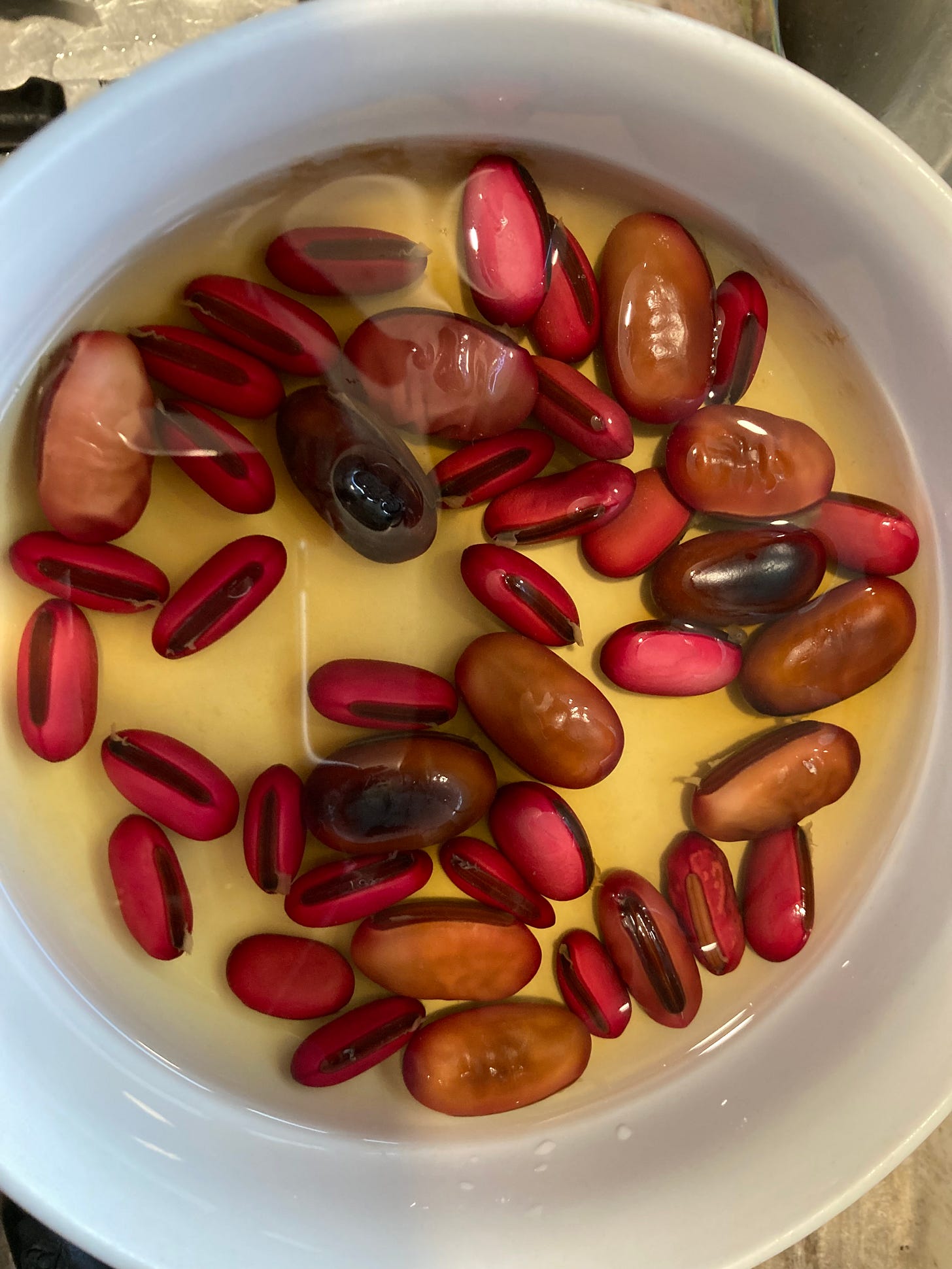

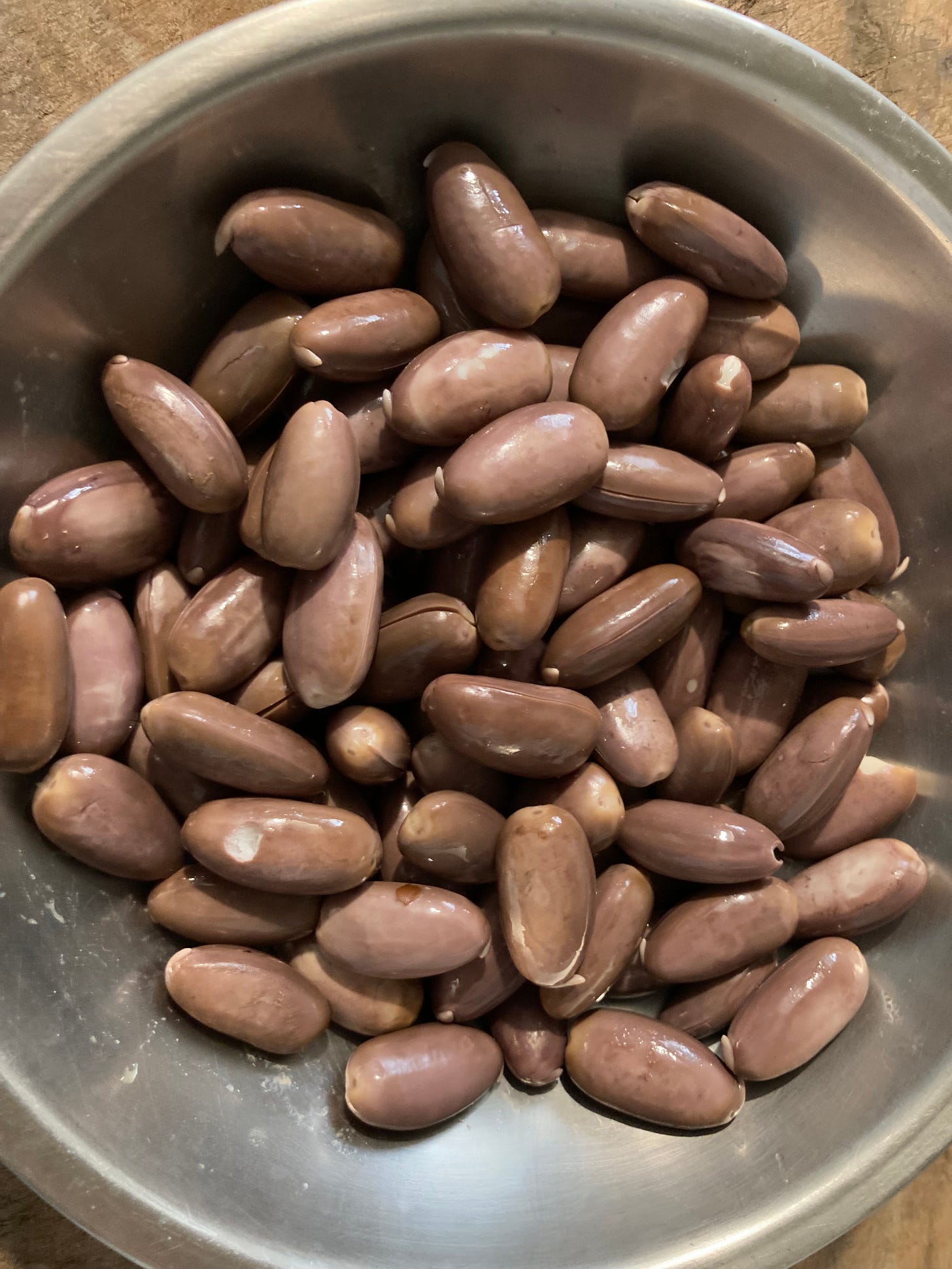



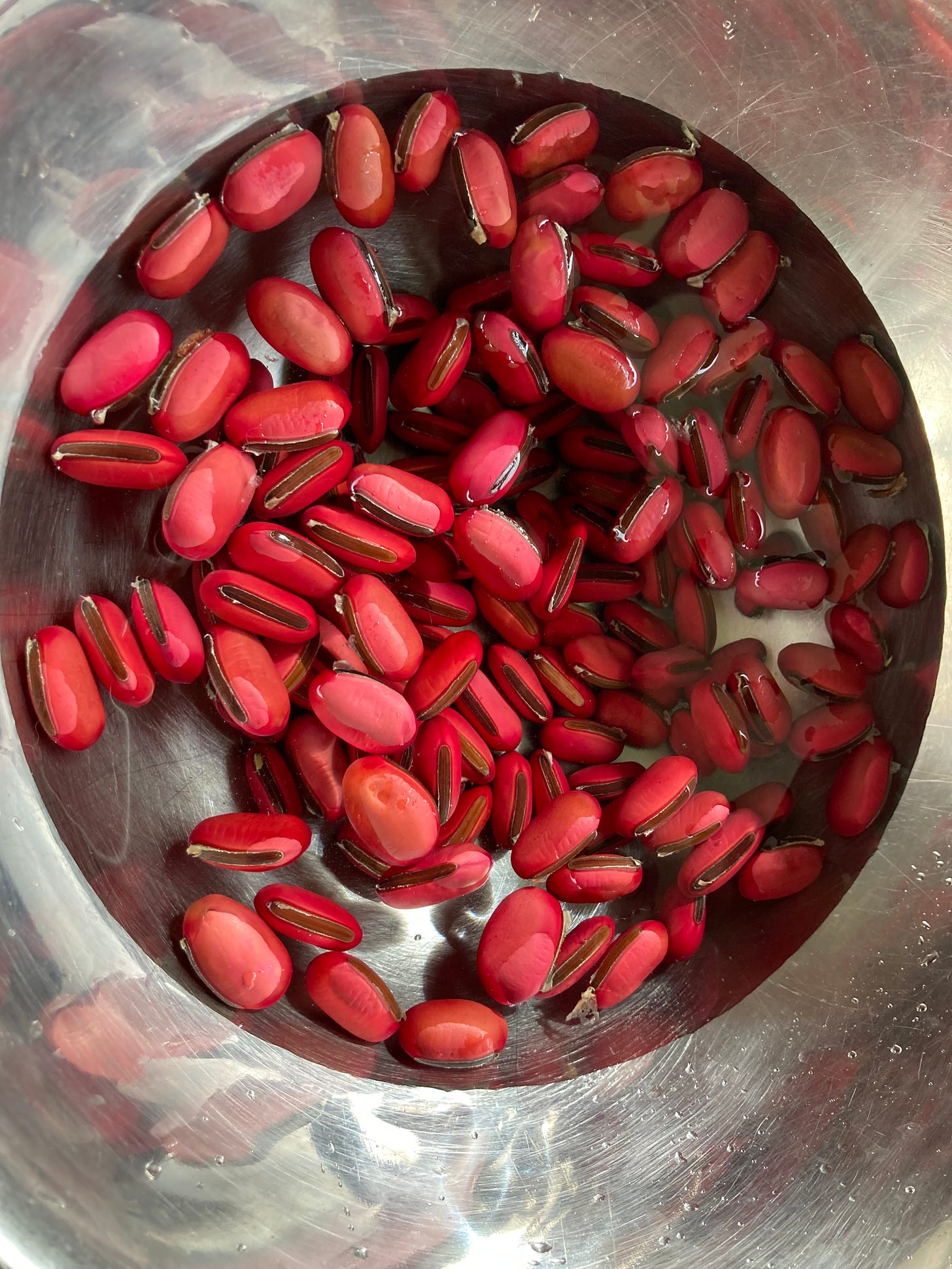
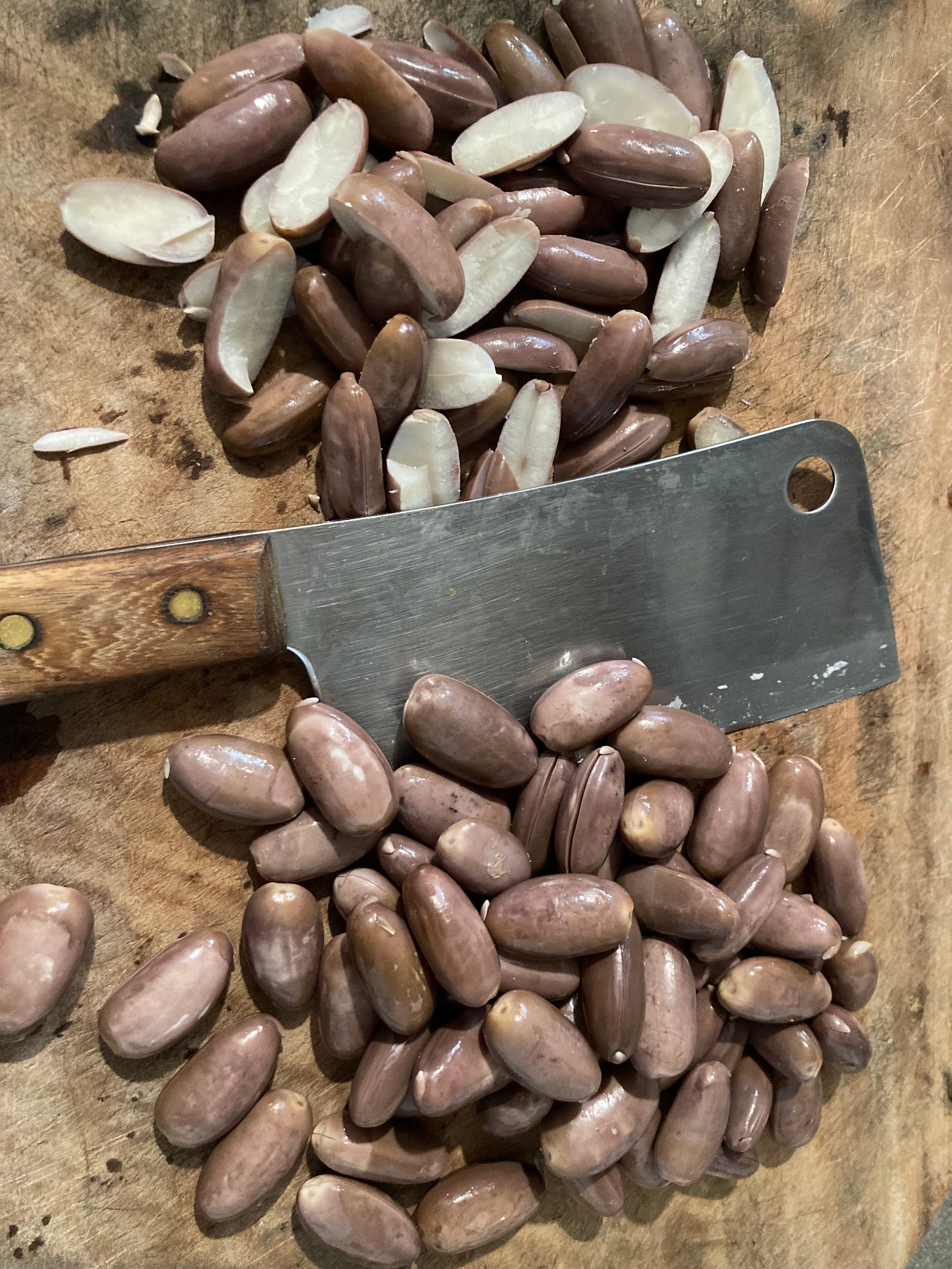
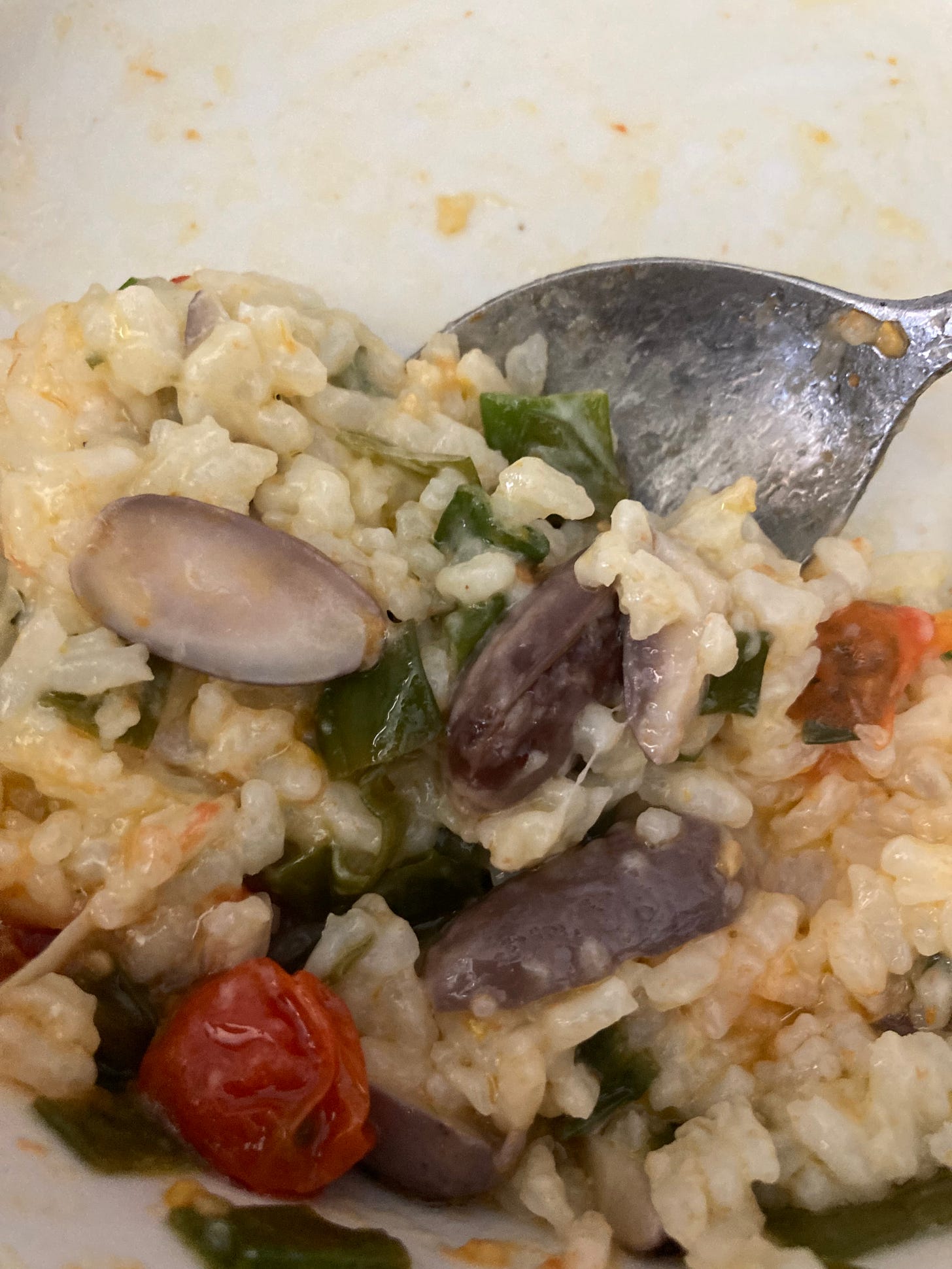
What are the traditional preparation methods in Brazil? They probably have it a little more streamlined.
Did you consider cracking them dry and then soaking? Might speed up the process of leeching. I’ve also heard people use baking soda for soaking some legumes, I wonder if ash might work similarly.
I am in the same position with Kentucky coffee tree. In theory it is a tree equivalent of lupini beans for humid temperature climates, but it has some toxins known to cause short and long term issues. I worry more about the longer term issues because I don’t know if our senses truly detect these. That is why I also avoid eating annona family fruit species, because of the potential for neurodegenerative toxins, even though they are widely eaten fruit.
My dad warned me about a few beans while I was a boy, and I’ve heard of lectins… but I didn’t realize what a process is required for so many varieties!